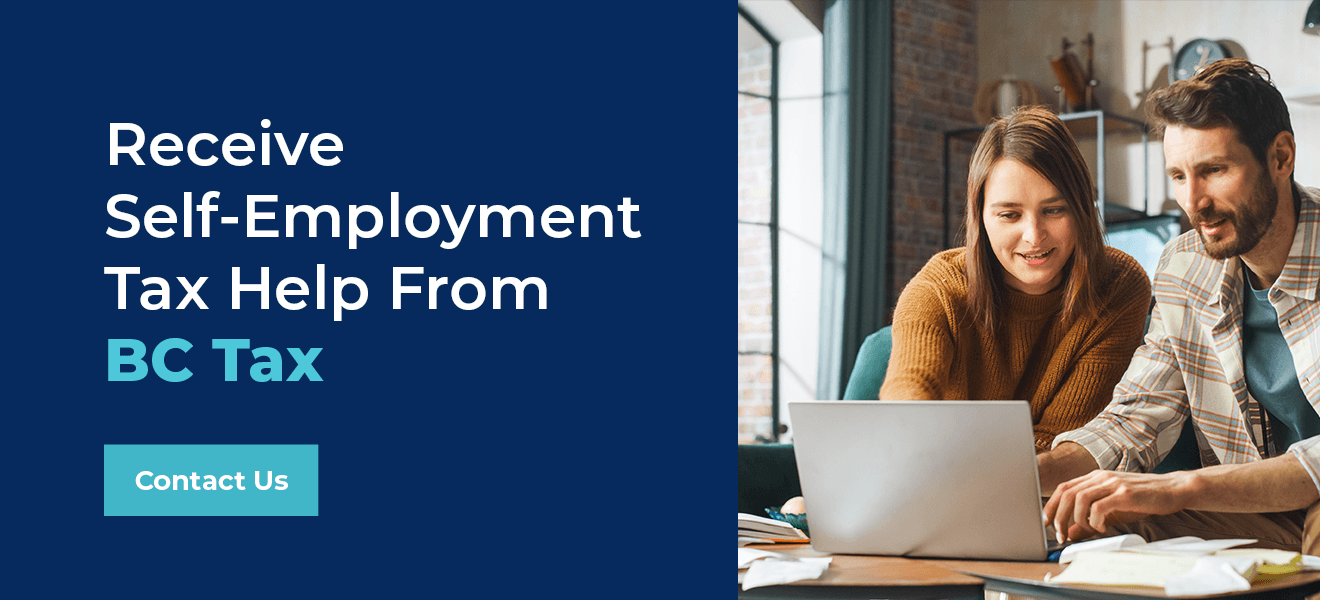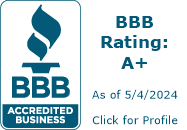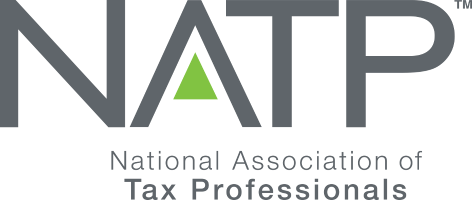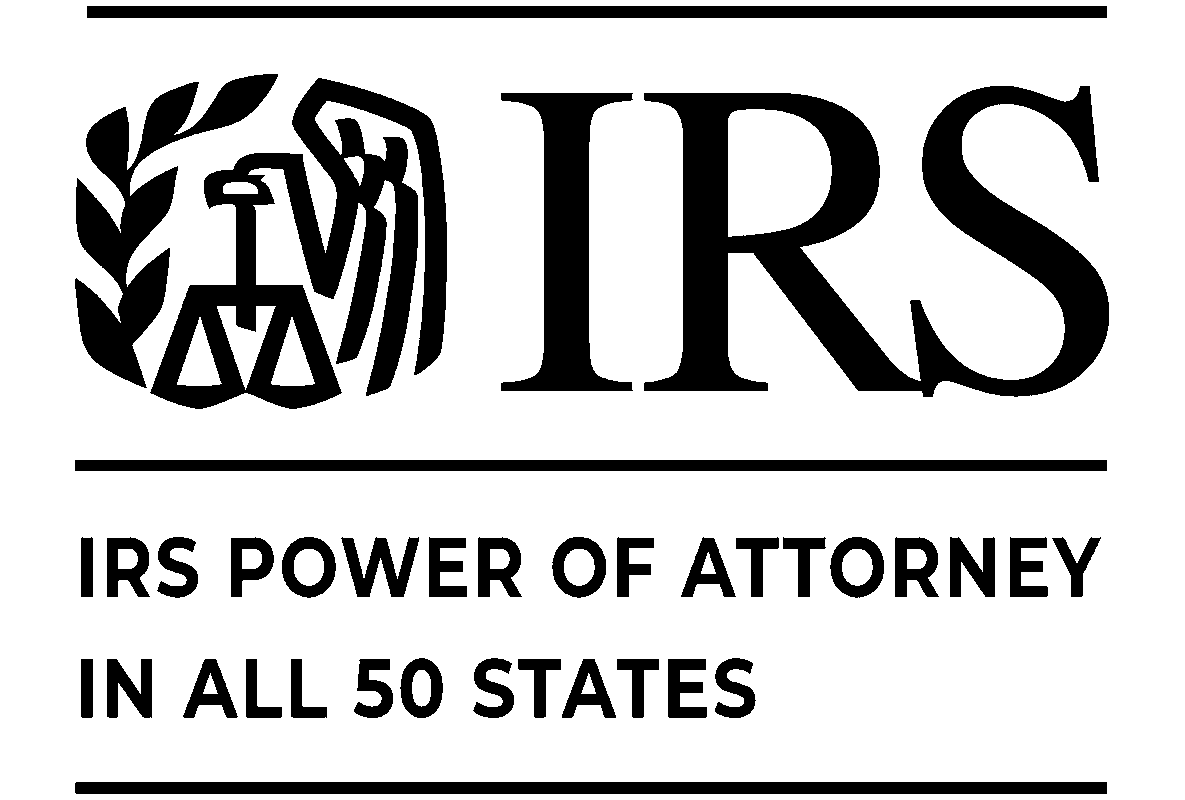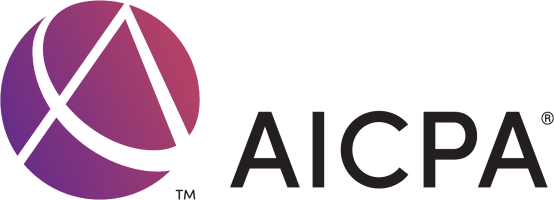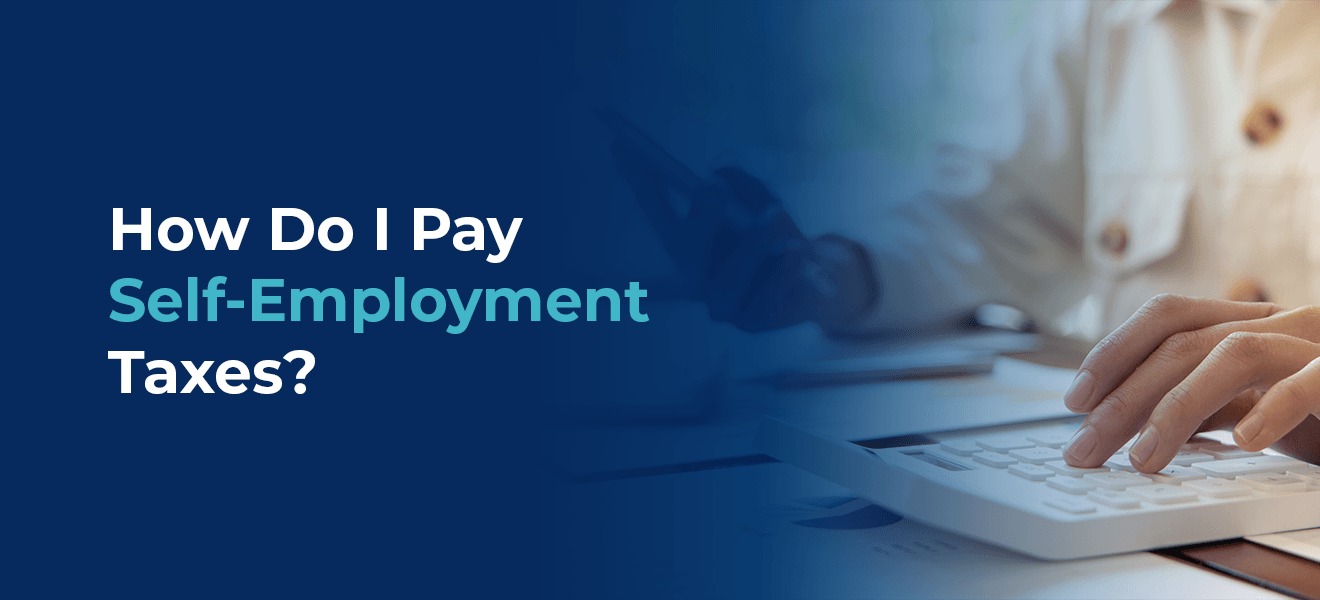
When you are self-employed, you have to play a more active role in paying your taxes since they aren’t withheld automatically. You must ensure you pay the correct taxes in the right amount at the appropriate time. Paying taxes is your responsibility as an employer as part of running your business. Do your research to understand what your responsibilities are.
Whether you are already self-employed or still considering it, you must be aware of various tax considerations and obligations. This guide gives you the rundown of all the essential information you need when it comes to filing and paying your self-employment taxes.
What Is Self-Employment Tax?
Self-employment tax is the tax small business owners and self-employed individuals pay the federal government. These funds go toward Medicare and Social Security, taxes you would normally share with an employer when working as part of a corporate organization. These are essential payments if you plan to receive benefits after retirement.
While an employee might pay 7.65% taxes because they make an equal contribution with their employer, a self-employed individual must pay both the employee’s and employer’s tax share. Still, this only applies to you if you meet certain IRS requirements.
Who Needs to Pay Self-Employment Tax?
The IRS will see you as self-employed if you are an independent contractor, a sole owner, part of a partnership or a freelancer. You also qualify as self-employed if:
- Your self-employment led to net earnings of $400 or more.
- Your church employee income amounts to $108.28 or more.
The self-employed income tax applies to you regardless of age, even if you already receive Medicare or Social Security.
Sometimes, family caregivers who assist older adults or people with disabilities at home may be self-employed. While the IRS requires these caregivers to report their caregiver compensation, they generally do not owe self-employment taxes if the compensation came from an insurance company or state agency alone. However, if the caregiver provides similar services for other people or is the sole owner of a caregiving or daycare service, they must pay self-employment taxes.
How Much Self-Employment Tax Do You Need to Pay?
You will generally need to pay a 15.3% self-employment tax rate. This consists of two parts:
- 12.4% in Social Security taxes
- 2.9% in Medicare taxes
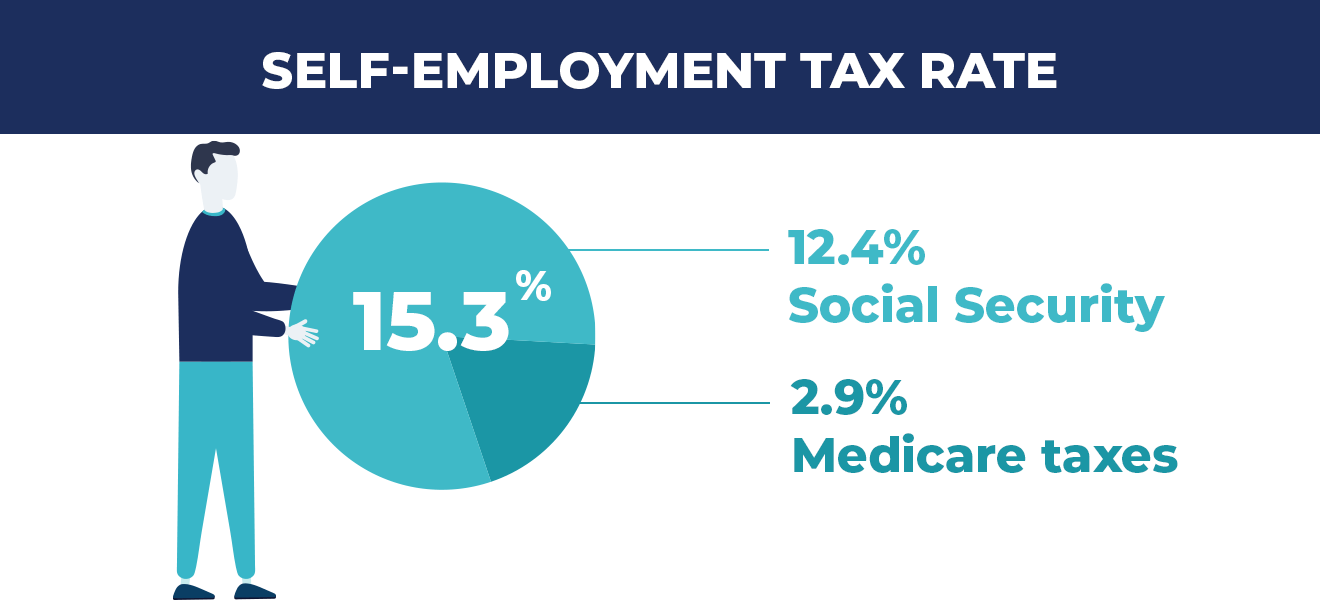
While the IRS requires you to pay Medicare taxes on any self-employment income exceeding $400, Social Security is only taxable for self-employment income below $160,200 in 2023. If the combination of your wages, net earnings and tips amount to this or above, you may not pay tax on amounts larger than $160,200.
For example, assume you have net earnings of $180,000 from self-employment in the 2023 tax year. Since only the first $160,200 is taxable, you owe the IRS tax on that amount. The remaining $19,800 is not subject to the self-employment tax.
It’s important to stay up to date with these exceptions since the taxable amount changes every year. Additionally, you may be obligated to pay an additional 0.9% Medicare surtax on self-employment income that exceeds a certain threshold. Here are some thresholds and situations that may trigger the 0.9% surtax as enforced by the Affordable Care Act (ACA):
- When single: $200,000
- When married and filing jointly: $250,000
- When married and filing separately: $125,000
- When you are head of the household: $200,000
- When you are a qualifying surviving spouse with a dependent child: $200,000
For example, if you are single and earned $300,000 for the 2023 tax year, you must pay the 2.9% Medicare tax on the first $200,000 and an additional 0.9% surtax on the excess $100,000. To make the calculating process easier, you can reach out to a tax accountant who can help you calculate how much you owe in taxes based on your income.
How to File Self-Employment Taxes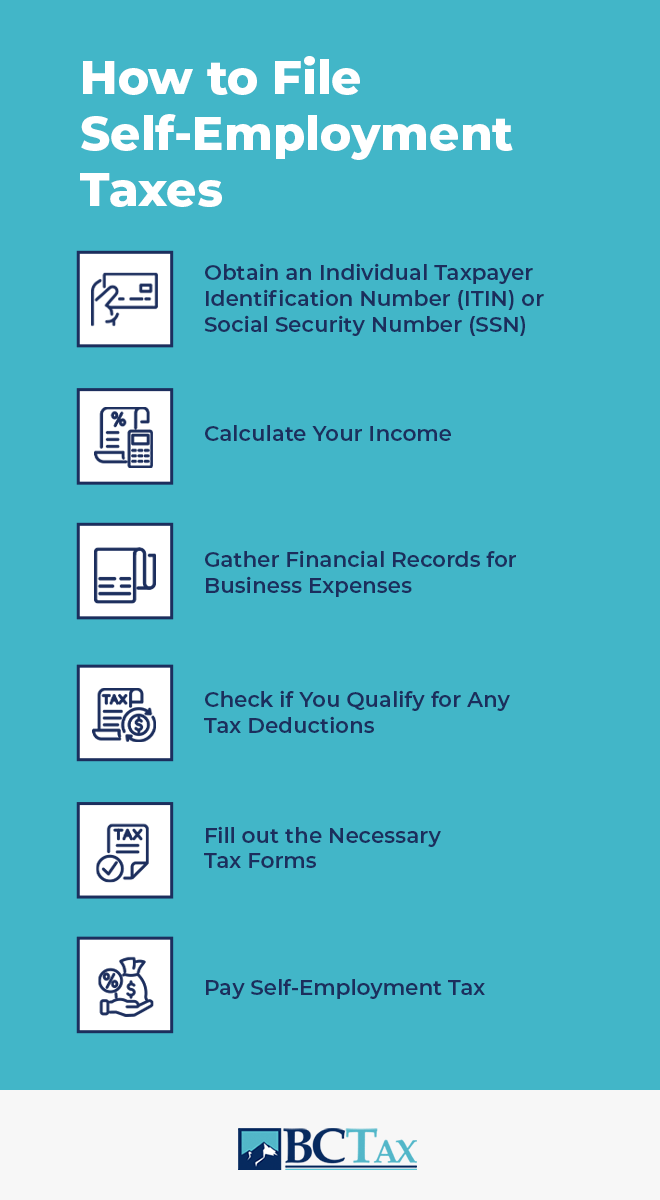
When filing taxes on your own, you will need Form 1040 Schedule SE and Schedule C. These forms help you calculate your self-employment tax, profit and loss, and your overall tax payment for the year. Filing your self-employment taxes can be much simpler by having a tax specialist from BC Tax assist you throughout the process. Whether you do your taxes yourself or hire a professional, it’s good to be prepared and know what to expect when filing your self-employment taxes. Here are six steps in paying self-employment taxes.
1. Obtain an Individual Taxpayer Identification Number (ITIN) or Social Security Number (SSN)
When paying self-employment taxes, you need an SSN or ITIN, so ensure you have these first. To get an SSN, visit any nearby Social Security office and apply for a Social Security card using Form SS-5. If you are a non-resident, you may be unable to apply for an SSN. In these situations, the IRS may issue you an ITIN if you file Form W-7.
2. Calculate Your Income
Knowing how much you earn is necessary to understand which rules apply to you and calculate how much tax you owe. Gather all the relevant informational tax reporting forms you have, including forms such as Form 1099-K and Form 1099-NEC, to determine your total non-employee compensation. Remember to include all income you earned, even if you’re missing a few tax forms or didn’t receive them.
3. Gather Financial Records for Business Expenses
You can take deductions for all your business expenses. Collect your financial statements, receipts and invoices that accumulated throughout the year to get an accurate picture of how much you spent on your business. For example, you might classify gasoline or office equipment as a business expense if you used your car for work or purchased new supplies for smoother business operations. Only deduct expenses necessary for running your business rather than personal expenses.
4. Check if You Qualify for Any Tax Deductions
While deducting your business expenses can reduce your taxable income, you can also reduce your tax by checking if you qualify for any additional tax deductions. Contributions to a traditional IRA, SIMPLE IRA or SEP IRA can help you reduce your taxable income even more. Similarly, if you make payments for yourself, a dependent or a spouse for health insurance premiums, you may qualify for further deductions.
5. Fill out the Necessary Tax Forms
Report your taxes and income annually with IRS Form 1040. You should also fill out three other forms to file with your return if you do not use any tax software. These self-employed tax forms include:
- Schedule C: Schedule C is mainly for sole owners and anyone who earns self-employed income. Use this form to report your gross business income and expenses and determine your company’s net profit and loss. This schedule lists various categories of business expenses, including cost of goods sold, auto expenses, depreciation expenses and home office deductions.
- Schedule SE: This form helps you calculate your self-employment tax by accounting for the net profit and loss you established in Schedule C.
- Schedule 1: Schedule 1 allows you to list any additional income or adjustments to your income. Here, you will report the various profits and losses from your business and then claim all self-employment deductions you qualify for, including your self-employed health insurance write-off, if you have it.
If you want something simpler and less time-consuming, investing in tax software to help you fill out the necessary self-employment tax schedules can be valuable. Alternatively, receiving help from a tax professional with BC Tax is ideal for reducing your time spent on tax, allowing you to continue focusing on the growth of your business.
6. Pay Self-Employment Tax
Self-employed individuals can pay taxes on their income monthly as they receive it or quarterly. These taxes include both self-employment tax and income tax. Since you likely do not receive standard paychecks as someone who is self-employed, it’s essential to make estimated tax payments on both of these parts. The forms mentioned above will help you with this.
Once you’re ready to file, you can send the forms and payment by mail or pay the IRS online. Ensure you send your payments on time, or you may find yourself dealing with self-employment tax debt or receiving a penalty for underpayment.
Determine How Frequently You’ll Submit Payments
You can choose your payment frequency to match a schedule that is convenient for you as long as you follow certain guidelines. Paying monthly or quarterly are the most common payment frequencies for paying estimated self-employment taxes.
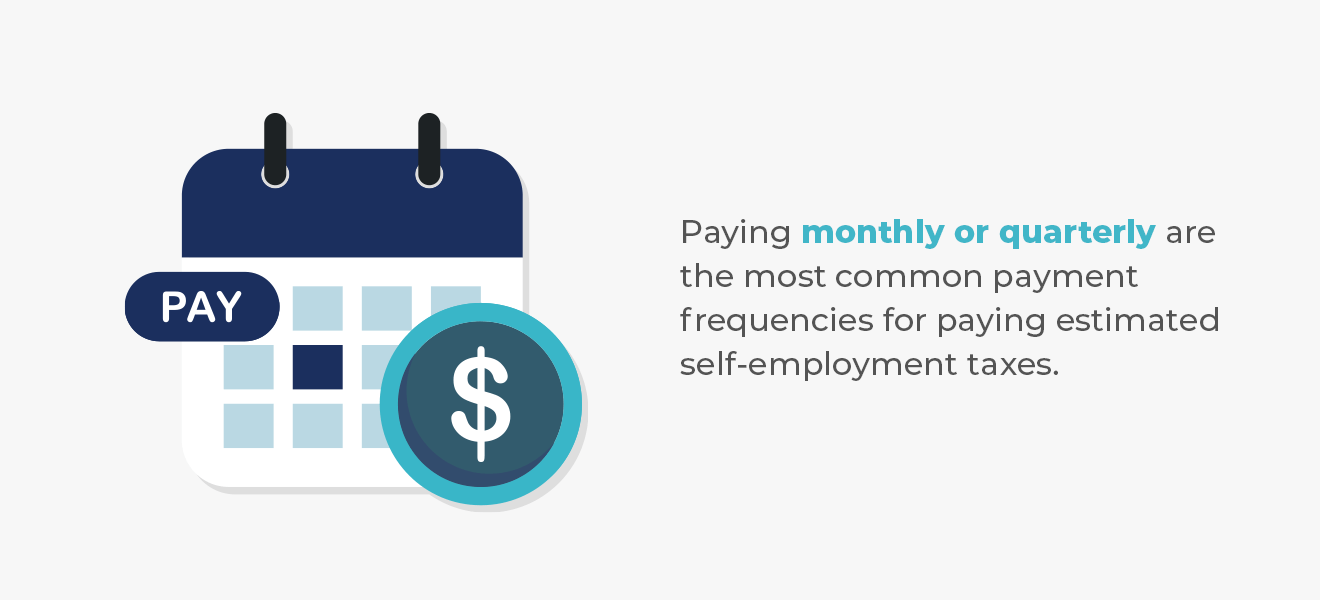
Monthly IRS Payments
One common way of sending the IRS your estimated tax payments is through monthly IRS payments. Even if you pay monthly, the IRS only charges interest or penalties if you skip paying for one quarter or pay too little tax for a quarter. When you make monthly payments, you essentially pay a month in advance.
For instance, let’s say you have a net profit of $4,000 from your self-employment business by the end of January. To estimate your self-employment tax for the month, multiply your net earnings ($4,000) by the self-employment tax rate (15.3%) and then divide your result by 100. In this example, your self-employment tax will be ($4,000 x 15.3)/100 = $612 monthly.
Rather than paying this amount along with two more months’ payments at the end of the quarter, you can send your estimated tax payment to the IRS within that same month. This schedule can also help you avoid paying tax on 11 more months’ profits at the end of the year, plus penalties and interest for not paying your taxes on time. The IRS prefers taxpayers to pay their taxes as they earn, which is why they enforce these penalties and interest when people fail to pay their taxes on time.
Quarterly IRS Payments
Your second option is to pay your self-employment taxes quarterly. This option may be ideal if you are a freelancer and regularly receive an unsteady monthly income. If you are a freelancer in this situation, paying monthly may make it challenging to make ends meet in February and March. If your total quarterly payment typically amounts to $1,200, but you made $5,000 in January, the taxes for that month would be $765, or more than half of that quarterly payment.
With quarterly IRS payments, you pay for the quarter that has passed, rather than paying ahead of time like monthly payments influence — a significant upside to paying estimated taxes four times a year. If you decide to go with quarterly IRS payments, you must make your quarterly payments by April 15, June 15, September 15 and January 15 of the following year.
These deadlines shift to the next business day if the due date falls on a holiday or weekend. To ensure you make these quarterly IRS payments on time, set aside your monthly payments each month into a separate bank account and avoid using this money. Only access the account and send the IRS your payments by the dates mentioned above.
What Happens When You Negate Paying Self-Employment Tax
Sometimes, a self-employed individual may be late and owe more than $1,000 in self-employment tax or fail to pay all the self-employment tax on time. During these times, the IRS charges a penalty and interest on the underpayment of estimated tax or unpaid tax. You may owe a penalty and interest even when you expect a refund when filing your annual return if you were late with prepayments.
If you are late on paying your self-employment taxes, the IRS will calculate your penalty based on the underpayment amount, how long ago the payment was due and the quarterly interest rate.
Receive Self-Employment Tax Help From BC Tax
If you are only beginning your self-employment journey, you may find it challenging to calculate how much your self-employment tax will come to. Similarly, if you have been self-employed for a while but are behind on your taxes or need assistance filing your taxes, you should work with a tax professional.
Get help with self-employment tax from BC Tax. Our professionals have been providing taxpayers with expert advice and assistance for years. We can help you with tax preparation, resolution and, most importantly, filing your self-employment taxes on time. Contact an expert from BC Tax today!

 1-800-548-4639
1-800-548-4639